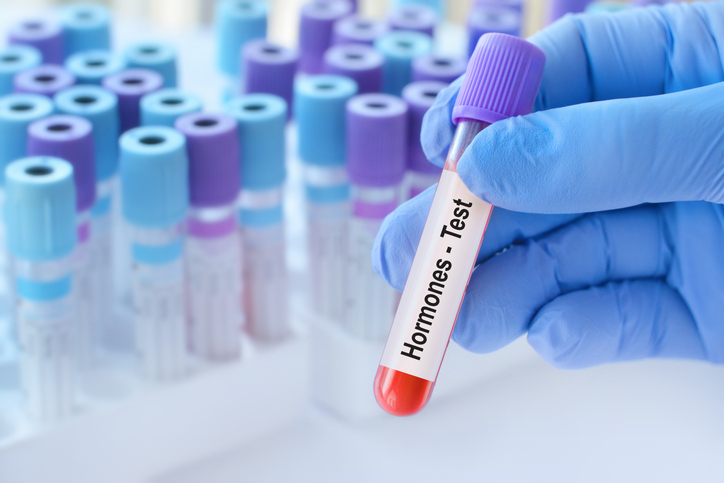Do I Need Progesterone Testing?
Lara Briden is an expert in women’s hormonal health, and she has some important information on why testing isn’t the only answer.

A new article from Naturopathic doctor Lara Briden is always something I look forward to as she has a very straightforward way of explaining hormonal issues.
Many women do ask whether they need to have hormone tests before using bioidentical hormones and the answer is yes if you want them, but the majority of women simply rely upon their symptoms and their severity as their guide.
It is also worth remembering that most standard blood tests offered are exactly that, blood tests. However, progesterone is a hormone that is best measured not in blood but in saliva and this is not routinely offered.
In this article, she explains how for her testing is not the only thing that you can do and she has some very helpful suggestions on keeping track of your progesterone levels.
Why you may have low progesterone levels
There are two ways to have low progesterone, and understanding that difference is key to understanding your cycle.
The first is an anovulatory cycle, when you don’t ovulate and therefore make no progesterone at all.
The second is a short luteal phase, when you do ovulate, but your progesterone window is too brief, and the hormone never reaches its full potential.
The temperature story
Progesterone is not just a lab value. It’s a story told by your cycle, and one of the clearest ways to understand that story is to chart your basal body temperature or BBT.
After ovulation, progesterone pushes BBT higher. You can track that change with an under-the-tongue thermometer or one of several wearables.
When you see a consistent shift of at least three higher temperatures, you know that ovulation has occurred. From there, a healthy luteal phase should last for at least ten days.
If your temperature never rises, it’s evidence you did not ovulate (even if you get a bleed). If it rises but falls again before ten days, you had a too-short luteal phase.
It can help to think in terms of ‘progesterone days’, which are the high-temperature days when you actually make progesterone. More progesterone days means having more of its benefits for your uterine lining, breasts, brain, and immune system.
And too few progesterone days means too little progesterone, even if your measurable progesterone level on any given day is within the normal range.
Testing progesterone
While charting is the best way to track progesterone, you can also measure it with an at-home urine test or a test from your doctor.
Timing is crucial because peak progesterone is in the middle of your luteal phase: roughly seven days after ovulation and seven days before your next period.
That could fall anywhere between day 14 and 28, depending on the length of your cycle.
So rather than relying on the standard “day 21 progesterone test,” a better approach is either to chart temperatures to pinpoint ovulation and then test five to seven days later, or to test when you believe you’re about a week from your period.
In that case, wait until your period actually arrives before interpreting the result. Then ask yourself: “Was the test done within the 14 days before my period?” If not, the result is meaningless.
Timed properly, a serum progesterone level of 3 ng/mL (9.5 nmol/L) is enough to confirm ovulation, but higher is better, and an optimal level is above 10 ng/mL (30 nmol/L).
Don’t stress about a low-normal number, though, because progesterone naturally pulses up and down every 90 minutes. Your test may have simply caught progesterone at a low moment.
Also, it’s not really possible to have too much endogenous progesterone.
Using hormonal birth control?
There’s no point testing progesterone because you have none as most contain synthetic progestins – not progesterone.
Perimenopause is when luteal phases start to wobble
One of the earliest signs of perimenopause is that luteal phases begin to shorten. You may still ovulate, but your progesterone window becomes less robust, and that shift is essentially what defines the onset of perimenopause.
Charting this can give you a front-row seat to these changes and help you understand the transition as it unfolds.
Signs and symptoms of low progesterone
Beyond charts and lab results, your body gives its own clues when progesterone is low.
For example, you might notice fertile-type mucus showing up in the premenstrual phase, spotting before your period, or heavier, more prolonged bleeding.
Those are all potentially signs of too-low progesterone.
The big picture
Your progesterone story cannot be captured by a single number. Instead, it lives in your cycle, symptoms, and simply paying attention to the robustness of your luteal phase, all can tell you more about your hormone health than any single lab test ever could.
And that story evolves with time. In your twenties and thirties, it’s all about promoting a robust luteal phase.
In your forties, it’s about noticing when your luteal phase begins to wobble as progesterone naturally starts to wane.
Helpful information
Maintaining good progesterone levels is essential for women throughout life, not just in the early years for help with PMS and fertility but continuing to provide protection from hormonal cancers, heart disease and osteoporosis.
Don’t be fooled into thinking that PMS is something that only happens to younger women, it can also occur at periMenopause too.
https://anna.blog.wellsprings-health.com/why-pms-can-strike-at-any-age/


















